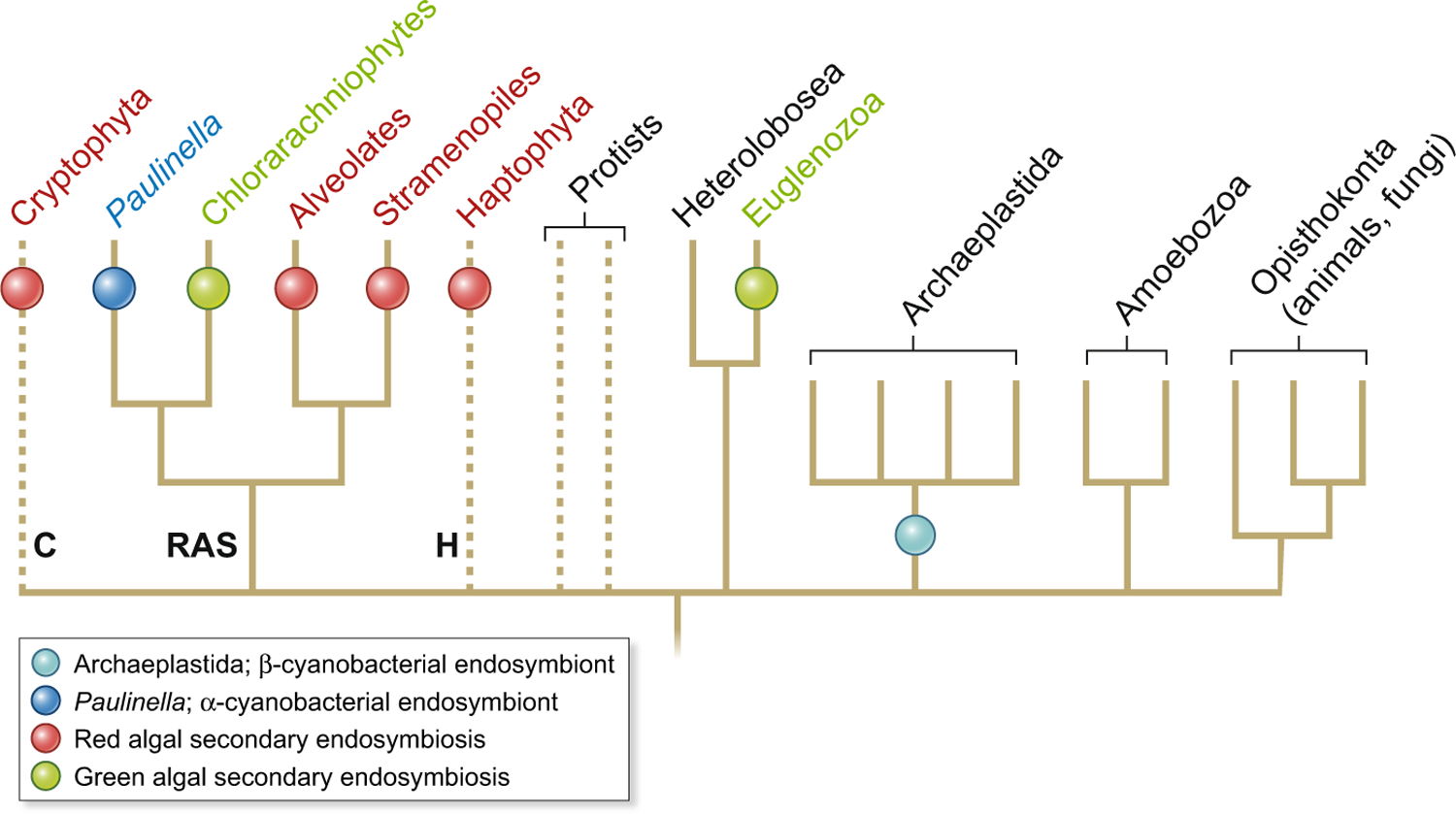Fig. 1.

The history of plastid endosymbiosis in eukaryotes. This is a highly reduced tree that only shows the groups of interest (see also Ponce-Toledo et al., 2019). Primary plastid origin occurred in the ancestors of Archaeplastida and photosynthetic Paulinella (within Rhizaria). Green algal secondary endosymbiosis occurred independently in the chlorarachniophyte (Rhizaria) and Euglenozoa lineages. Red algal secondary endosymbiosis has occurred in the alveolates (e.g. dinoflagellates), stramenopiles, cryptophytes and haptophytes. These taxa are informally referred to as CRASH (i.e. cryptophytes, rhizarians, alveolates, stramenopiles and haptophytes) with phylogenetic evidence existing for the monophyly of SAR (stramenopiles, alveolates and rhizarians) taxa (Bhattacharya & Price, 2020; Fan et al., 2020). Broken lines indicate unclear phylogenetic affiliations that may impact the number of red algal endosymbiosis if some (or all, highly unlikely) of these lineages share a single event. There is a variety of plastid-lacking heterotrophic lineages, not shown here, such as ciliates, telonemids and katablepharids, that are sister to photosynthetic taxa in the CRASH. Multiple tertiary endosymbioses involving green algae, haptophytes and diatoms have occurred in the dinoflagellates that are not shown here (Gross et al., 2012).
